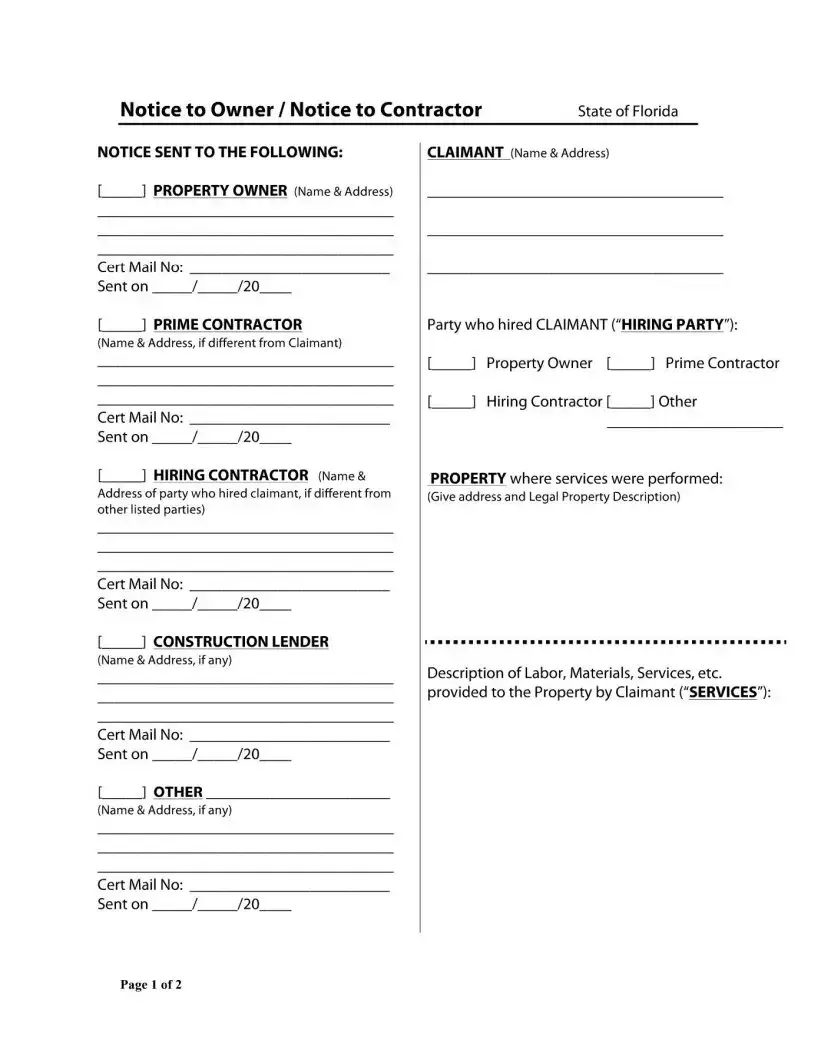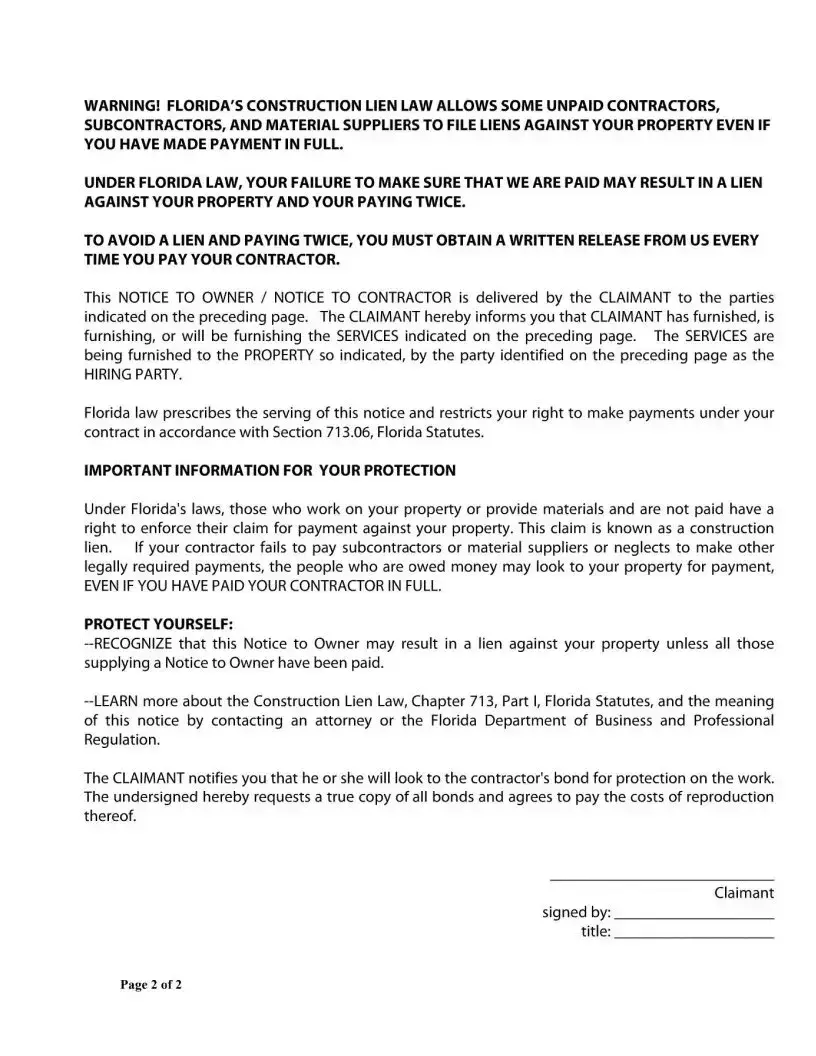What is the purpose of the Notice to Owner (NTO) form in Florida?
The Notice to Owner (NTO) form in Florida serves as a preliminary notice that subcontractors, material suppliers, and other parties furnish to property owners and other stakeholders on a construction project. Its primary purpose is to inform the property owner that the sender, also known as the claimant, has provided or will be providing services, labor, or materials to the property. This form plays a crucial role in the protection of the claimant's right to file a construction lien against the property if they are not properly compensated for their contributions. By delivering this notice, the claimant ensures that the property owner is aware of their involvement in the project and their potential claim, which helps in preventing unpaid contractors and suppliers from being overlooked and enhances the transparency of financial obligations related to the project.
How does the Notice to Owner (NTO) affect property owners in Florida?
For property owners in Florida, the Notice to Owner (NTO) acts as an important alert mechanism that signals when a claimant, such as a subcontractor or material supplier, asserts their rights to payment for contributions made to a construction project on the owner's property. Upon receiving an NTO, the property owner is made aware that they have financial obligations to parties other than the primary contractor they may have contracted with. This awareness is crucial because under Florida's Construction Lien Law, unpaid claimants have the right to file liens against the owner's property, which can complicate the property's legal and financial status. To avoid such liens and potentially paying twice for the same services or materials, property owners are advised to obtain written releases from claimants every time they make a payment to their contractor. This ensures all parties are compensated appropriately, and it helps protect the owner's property from claims and liens.
What steps must be followed to properly deliver a Notice to Owner in Florida?
Delivering a Notice to Owner (NTO) in Florida must be done in accordance with the state's Construction Lien Law to ensure its validity and the protection it affords. The claimant must send the NTO to the property owner, the prime contractor, the hiring contractor (if different from the prime contractor), and any known construction lender, using certified mail. This process guarantees that all relevant parties are formally notified of the claimant's involvement in the project and their rights to file a lien if not paid. The NTO must be sent within 45 days of the claimant commencing their work or delivering materials to the site, to ensure timely notice. Properly addressing and sending the NTO within this timeframe is crucial for preserving the claimant's lien rights under Florida law.
Where can a property owner or claimant find more information about the Notice to Owner and Florida's Construction Lien Law?
Property owners or claimants looking for more information about the Notice to Owner and Florida's Construction Lien Law have several resources at their disposal. The Florida Department of Business and Professional Regulation (DBPR) is a primary source for detailed legal guidelines and procedural information related to construction projects and lien laws in the state. Additionally, consulting with an attorney who specializes in construction or real estate law can provide personalized guidance and clarifications based on specific circumstances or projects. Professional legal advice ensures that both property owners and claimants understand their rights, responsibilities, and the steps needed to comply with the state's lien laws, safeguarding their financial and property interests.

